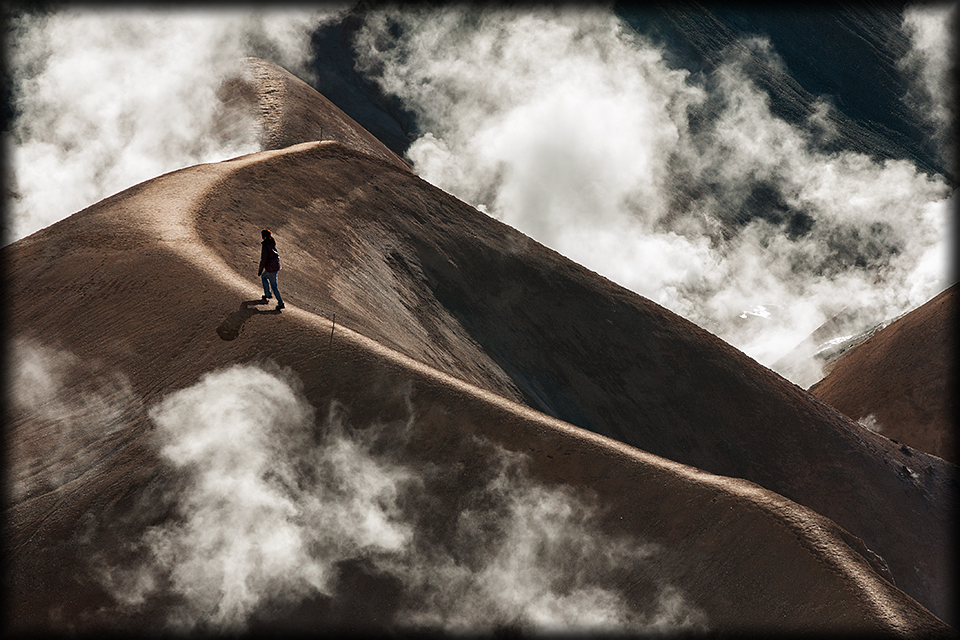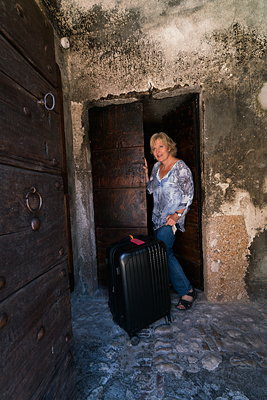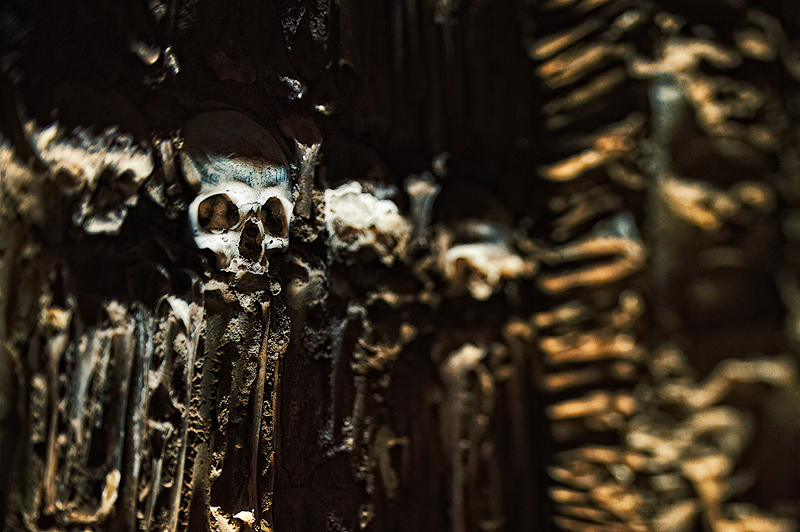Amid cobblestone streets and old European buildings that let you know you’re not in the New World, Toto, stands a church that Ripley’s Believe It or Not would’ve loved to have found.
The Bone Chapel ( Capela dos Ossos ) in the Royal Church of St. Francis in Evora, Portugal is unlike any chapel I’ve ever seen.
Here the bones of perhaps 5,000 people decorate the walls. It’s an unusual display, but ropes and interior lighting make it difficult to find a unique photo in the chapel.
We had been talking in our workshop about light metering – specifically using your spot meter to dial in an exposure and then checking it with your histogram to make sure highlights are preserved.
The focused artificial lighting in the chapel presented an opportunity to illustrate this way of thinking about the light in a composition. Instead of being disappointed that the highlights were being blown in an otherwise normal exposure, I decided to expose for the highlights and let the darks fall where they may.
In this case, target the bright brow of the brightly lit skull and spot meter on it. Adjust your exposure so it’s showing about 1.5 to 1.67 stops above middle tone gray ( the zero line on your meter ) and check the histogram to make certain you haven’t blown any highlights.
By doing this, you’re essentially saying that the bright part of the brow is around 1.5 stops brighter than middle tone gray. And that’s true, it is. That’s the beauty of spot metering, it forces you to start thinking about how bright your subject is compared to middle tone gray. Is it brighter? Darker?
My wife Kim uses the these five as a way of guessing the right tone. Black Brown Gray/Green Cream White.
If your subject is Black (and you’re spot metering on it), set the exposure to about 1.67 stops UNDER middle tone gray.
If it’s Brown, set it to about 1 stop UNDER middle tone gray.
If it’s Gray or Green, leave it on the Zero line (neither plus nor minus compensation).
If it’s Cream, ADD about 1 stop.
If it’s White, ADD about 1.67 stops.
Now, substitute the words Brown and Cream with the relative brightness of things we normally think of in those colors.
This method allowed me to focus attention on the brightest area which was my subject, the skull.
I happen to like photos with a dark side to them, and this technique used in the bone chapel seemed to be a perfect application for my tastes.





